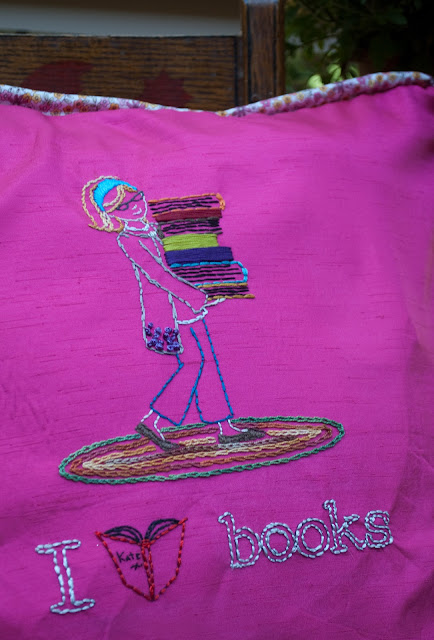Now you might be thinking, is that a dinosaur? And you would be right-an animatronic, roaring and moving dinosaur. While HD enjoyed it, I found the dinosaur exhibit a bit distressing. Trying to explain to small children the simple fact that dinosaurs are not alive anymore when there is "one" right next to the North American Black Bear is confusing to say the least. Incongruent. Let's stick to live animals in the zoo, please.
Sunday, October 21, 2012
Piping 1, 2, 3
Did you realize that making piping is as easy as 1, 2, 3? Never again will you be limited to the standard sizes and colors of store-bought piping....I needed a jumbo-style decorative edging to go with Kate's book snuggling pillow and this is what I did:
1. Gather your materials...fabric strips that are a wide enough to fold around the cording with room to spare(at least an inch excess) and cording or rope in desired width and length for your project. A little note about the fabric strips, technically you should cut them on the bias which will allow your fabric to curve nicely and allow movement and body to your project. But for many uses, I simply do not do this. - as it is not needed. I used this piping for a square pillow and thus movement and "curve appeal" just was superfluous.
1. Gather your materials...fabric strips that are a wide enough to fold around the cording with room to spare(at least an inch excess) and cording or rope in desired width and length for your project. A little note about the fabric strips, technically you should cut them on the bias which will allow your fabric to curve nicely and allow movement and body to your project. But for many uses, I simply do not do this. - as it is not needed. I used this piping for a square pillow and thus movement and "curve appeal" just was superfluous.
2. Fold the fabric over the cording and using the zipper foot, stitch a seam along the cording-encasing it in the fabric. The zipper foot is key here as it allows you to get very close to the cording.
When you are finished, you have piping to use on any project that you see fit.
3. To sew the piping in, on the inside of your project, place your piping-raw edges matching and still using the zipper foot, sew in place. In this example, I made a pillow. First, I basted my piping around the perimeter of the front side of the pillow case(as seen in the picture below). I then sandwiched the backside of the pillow on top of the front side with good sides touching. Lastly, I sewed around the perimeter of the pillow and then turned inside out-as I had an envelope back of which to turn out from.
Wednesday, October 10, 2012
The Happy Hooker Returns
I've been thinking a lot lately about these guys...
It might be time to get starting on a new guy...Thinking about a panda...Kate likes pandas...
Subscribe to:
Comments (Atom)



















